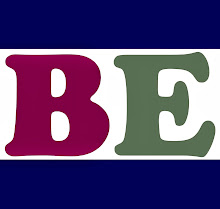I like David Graeber’s description of the way money emerged, partly because it fits with the approach taken in my article on Money. Graeber suggest that money functioned in two different ways in parallel in traditional societies.Travellers moving outside their communities always carried gold and silver. This enabled them to purchase goods and services when they were travelling among people who did not know them and therefore could not trust them. Coins were not much use in this situation, because even if their genuineness was authenticated by the mark of a banker or king, they would be trusted outside their own territory. Travellers would use scales to measure the gold or silver they used to make purchases while on their journeys.
Most trade within local communities was undertaken with credit. Most people would be quite self-sufficient for food. If they wanted to buy shoes from a local cobbler or clothing from a local garment maker, they would often buy it on credit, because, they might not be able to pay for it until the harvest had come. The cobbler would know his neighbours, so he would only give credit to those he knew to be creditworthy, ie those he trusted. The garment maker might buy some shoes by swapping some debts with the cobbler. Trade emerged with local traders keeping a slate of those who owed payment to them. Banking would emerge when responsibility for recording uncompleted exchanges was taken over by a specialist. This is very similar to the process described in my parable called Beeble.
Very little of the American gold and silver that reached Europe actually ended up in the pockets of ordinary farmers, mercers or haberdashers. The lion’s share stayed in the coffers of either the aristocracy or the great London merchants, or else in the royal treasury. Small change was almost non-existent. In the poorer neighbourhoods of cities or large towns, shopkeepers would issue their own lead, leather, or wooden token money; in the sixteenth century, this became something of a fad, with artisans and even poor widows producing their own currency as a way to make ends meet. Elsewhere, those frequenting the local butcher, baker, or shoemaker would simply put things on the tab. The same was true of those attending weekly markets, or selling neighbours milk or cheese or candle-wax. In a typical village, the only people likely to pay cash were passing travellers and those considered rif-raff, paupers and ne’er do wells so notoriously down on their luck that no one would extend credit to them. Since everyone was was involved in selling something, however just about everyone was both creditor and debtor; most family income to the form of promises from other families. Everyone knew and kept count of what their neighbours owned one another; and every six months or year or so, communities would hold a general public “reckoning” cancelling debts out against each other in a great circle, with only those differences then remaining when all was done being settled by use of coin or goods. (Graeber p.327)
Cash was employed largely between strangers, or when paying rents, tithes, and taxes to landlords, bailiffs, priests, and other superiors. The landed gentry and wealthy merchants, who eschewed hand-shake deals, would often use cash with one another, especially to pay off bills of exchange drawn on London markets. Above all gold and silver were used by the government to purchase arms and pay soldiers, and amongst the criminal classes themselves. This meant that coins were most likely to be used both by the sort of people who ran the legal system-the magistrates, constables , and justices of the peace-and by those violent elements of society they saw it as their business to control. (Graeber p.329)


